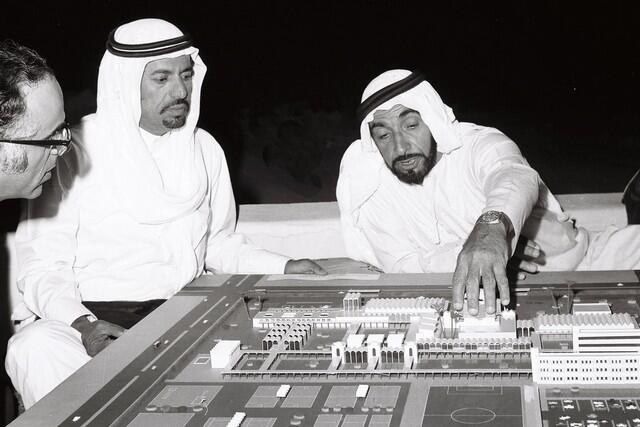An exhibition outlining the Abu Dhabi Plan opened to the public on Tuesday to explain the goals of this ambitious initiative.
The long-term vision for transforming and diversifying Abu Dhabi’s oil-dominated economy is reinvigorated with the release of a blueprint that touches on nearly all aspects of civil society.
The Abu Dhabi Plan – which is aimed at keeping the emirate on track towards its Economic Vision 2030 – was dedicated on Tuesday in the presence of members of the Royal family and government officials.
It is a comprehensive update of a policy launched in 2007, and, according to official documents, “aims to achieve Abu Dhabi’s vision in maintaining a safe and secure society, and building a sustainable, diversified, and globally open economy”.
An exhibition explaining the plan and its goals will open to the public at the Abu Dhabi National Exhibition Centre on Wednesday.
Abu Dhabi Executive Council said the plan was a reflection of the late Sheikh Zayed’s legacy, and a blueprint for Abu Dhabi’s growth and development.
“This plan serves as a transitional step towards ensuring that the Abu Dhabi government achieves the emirate’s vision, through specifying the priorities and solving the challenges that face us today,” said Maj Gen Mohammed Khalfan Al Romaithi, commander-in-chief of Abu Dhabi Police and a member of the Executive Council.
“The plan also provides a strong push towards excelling in government work and coordinating all efforts towards meeting the objectives established by the plan.”
The plan set out five sectors – social development, economic development, infrastructure and environment, security, justice and safety, and government affairs – under which 25 key objectives and 83 programmes are laid out.
It aimed for improvements in tourism, transport, health, education, women’s empowerment, Emiratisation, the judicial system, business, property, renewable energy, information and communication technology, media, financial services and insurance.
Steps to preserve Islam, culture, heritage and Abu Dhabi’s natural resources were included.
Ali Majeed Al Mansoori, Department of Economic Development chairman and an Executive Council member, said the plan was essential for Abu Dhabi’s long-term vision as it identified priorities for the next five years.
“It is natural for the achievements of the Abu Dhabi Plan’s goals to be affected by the decrease in oil prices globally. However, the Abu Dhabi Plan includes processes and mechanisms of adapting to the cyclical changes and various challenges,” said Mr Al Mansoori.
“The emirate of Abu Dhabi has also invested heavily in the past few years to support diversification policies, which is a positive indicator and clear evidence that the development journey is ongoing despite any urgent or new challenges that face us.”
The latest plan continues and honours the legacy that began 50 years ago with Sheikh Zayed, the county’s Founding Father, who issued his first instructions as the Ruler of Abu Dhabi, stating that the work of government should be “aligned with the actual needs of the country and the people”.
In September 1966, after establishing the framework of government, he tasked it with drawing up the emirate’s first five-year plan.
The latest plan is focused on implementation of the Abu Dhabi Vision, through 25 objectives that are linked to government programmes over the next five years, to provide a “bridge” between the government’s policy and government entities’ own strategic plans.
Source: The National











